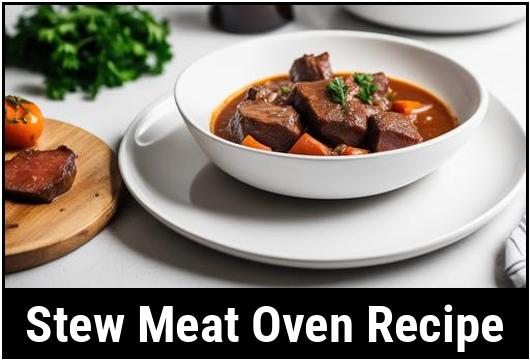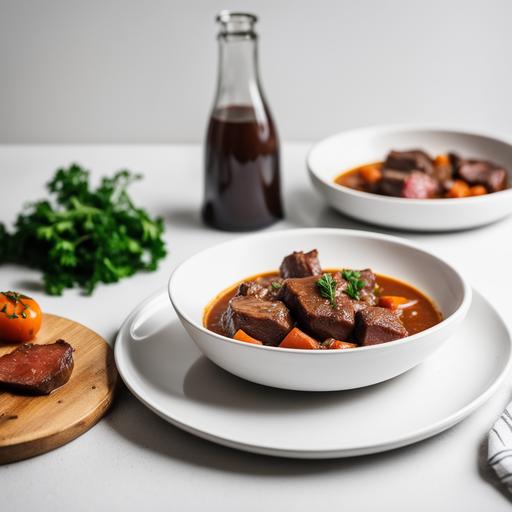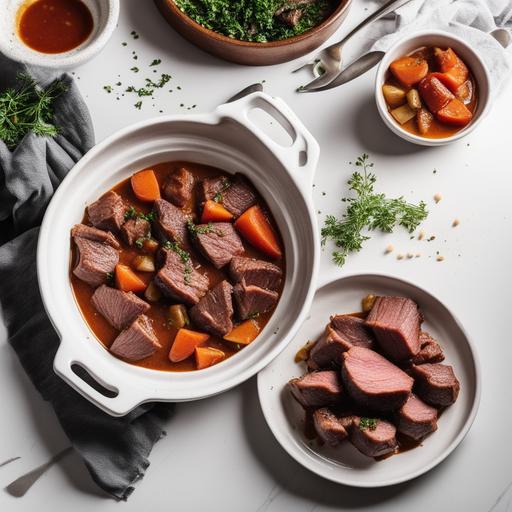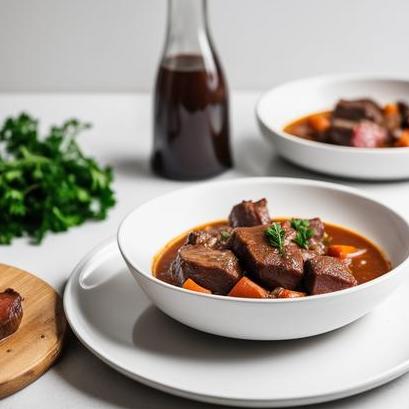
The Ultimate Guide To Stew Meat Oven Recipe
Stew meat is a versatile and affordable option for a hearty and delicious meal. When cooked in the oven, the meat becomes tender, succulent, and bursting with flavor. In this comprehensive guide, we will delve into the science behind stew meat, explore its culinary details, provide tips on selection and cleaning, discuss various preparation techniques, offer insider tips and variations, explain how to check doneness, share a mouthwatering recipe, and even cover the pitfalls of overcooking and undercooking. So, let’s dive into the world of stew meat and uncover the secrets to creating the perfect oven-baked stew!
The Science of Stew Meat
Stew meat is typically cut from tougher and less expensive cuts of meat, such as chuck, brisket, or shanks. These cuts come from the more muscular parts of the animal, containing connective tissues and collagen. When cooked at low temperatures over an extended period, these tissues break down, resulting in tender and flavorful meat.
During the cooking process, collagen undergoes hydrolysis, transforming into gelatin. The gelatin adds body and silkiness to the stew, ensuring a rich and satisfying texture. The prolonged cooking time also allows the flavors of the meat, herbs, and vegetables to meld together, creating a symphony of taste.
Culinary Details of Stew Meat
When selecting stew meat, opt for well-marbled cuts, as the fat helps keep the meat moist and enhances flavor during the slow cooking process. Look for cuts with a deep, reddish color and minimal browning or discoloration.
Cleaning the stew meat is a crucial step to ensure proper hygiene. Rinse the meat under cold water and pat it dry with paper towels. Remove any excess fat, gristle, or sinew, as they can become tough and chewy during cooking.
Preparation Techniques

Marinating Stew Meat
Marinating stew meat before cooking can enhance its flavor and tenderize the meat further. Create a marinade by combining your choice of liquids, such as red wine, vinegar, or citrus juice, with aromatic herbs, spices, and seasonings. Place the meat in a ziplock bag or a covered bowl, pour in the marinade, and refrigerate for at least two hours, but overnight is even better. The longer the meat marinates, the more profound the flavors will infuse.
Searing the Meat
Searing the stew meat before transferring it to the oven can add an extra layer of depth to the dish. Heat a cast-iron skillet or a heavy-bottomed pan over high heat. Add a small amount of cooking oil with a high smoke point, such as vegetable or canola oil. Working in batches, sear the meat on all sides until nicely browned. Searing seals the juices within the meat, resulting in tender, succulent bites.
Tips and Variations

-
For a gluten-free option, ensure that your choice of liquids, such as broth or stock, does not contain any gluten-based additives.
-
Experiment with different herbs and spices, such as thyme, rosemary, bay leaves, paprika, or cumin, to create unique flavor profiles.
-
Enhance the stew by adding vegetables like carrots, potatoes, mushrooms, onions, or celery during the cooking process.
-
Consider adding a splash of Worcestershire sauce, soy sauce, or balsamic vinegar to intensify the umami flavors.
-
To thicken the stew, mix a tablespoon of cornstarch with cold water and add it to the dish during the final stages of cooking.
Checking Doneness

Determining when your stew meat is cooked to perfection requires a keen eye and a trusty meat thermometer. The meat should be fork-tender and easily fall apart. The internal temperature should ideally reach 165°F (74°C) to ensure it’s safe to consume.
Mouthwatering Stew Meat Oven Recipe

Ingredients:
-
2 pounds (900g) stew meat
-
2 tablespoons vegetable oil
-
1 large onion, diced
-
3 cloves garlic, minced
-
2 carrots, sliced
-
2 celery stalks, chopped
-
1 cup mushrooms, sliced
-
3 cups beef broth
-
1 cup red wine (optional)
-
2 bay leaves
-
1 teaspoon thyme
-
Salt and pepper to taste
Instructions:
-
Preheat the oven to 325°F (160°C).
-
In a large oven-safe pot or Dutch oven, heat the vegetable oil over medium-high heat.
-
Add the stew meat to the pot, season with salt and pepper, and brown on all sides. Work in batches if needed, ensuring not to overcrowd the pot.
-
Once the meat is nicely browned, transfer it to a plate, and set it aside.
-
In the same pot, add the diced onion, minced garlic, sliced carrots, chopped celery, and mushrooms. Sauté for 5-7 minutes until the vegetables start to soften.
-
Pour in the beef broth and red wine, followed by the bay leaves and thyme. Bring the mixture to a gentle boil.
-
Return the browned stew meat to the pot.
-
Cover the pot with a tightly fitted lid and place it in the preheated oven.
-
Allow the stew to cook for approximately 2-3 hours, or until the meat is fork-tender and the flavors have melded together harmoniously.
-
Remove the pot from the oven and discard the bay leaves.
-
Serve the delicious stew meat with crusty bread, rice, or mashed potatoes for a complete and satisfying meal.
Overcooking and Undercooking Stew Meat
Though stew meat is forgiving when it comes to cooking times, both overcooking and undercooking can affect the quality of the dish. Overcooking can lead to dry and stringy meat, while undercooking will result in tough and chewy meat. Achieving the perfect balance requires patience and practice. Keep an eye on the meat while it’s cooking and use a meat thermometer to prevent any disappointments.
Conclusion
Stew meat oven recipes offer a world of flavors and textures that will liven up your dining experience. Understanding the science, culinary details, and proper techniques will ensure your stew meat dishes are nothing short of extraordinary. Remember, from selection to cleaning, marinating to cooking, and even checking doneness, every step is essential in creating a delicious final product. So, gather your ingredients, trust the process, and embark on your next culinary adventure with stew meat as your gastronomic companion!
Sources
FAQS On Stew Meat Oven Recipe
What Type Of Meat Should I Use For A Stew Meat Oven Recipe?
For a stew meat oven recipe, it is best to use tougher cuts of meat such as chuck, round, or brisket. These cuts are ideal for slow cooking methods like stewing as they have enough connective tissue and fat, which will break down during the long cooking process and result in tender, flavorful meat.
How Should I Prepare The Meat Before Cooking It In The Oven For A Stew Recipe?
Before cooking the stew meat in the oven, it is recommended to season it with salt and pepper to enhance the flavors. Additionally, you can choose to dredge the meat in flour to help brown the surface and thicken the stew.
How Long Should I Cook The Stew Meat In The Oven For A Perfect Stew?
The cooking time for stew meat in the oven can vary depending on the recipe and the size of the meat pieces. However, as a general guideline, it is best to cook the stew meat in a preheated oven at around 325°F (160°C) for 2 to 3 hours. This allows the meat to become tender and the flavors to meld together.
What Temperature Should I Set My Oven To When Cooking Stew Meat?
To achieve the desired tenderness and flavors, it is recommended to set your oven to a low temperature, around 325°F (160°C). This temperature is ideal for slow-cooking the meat, allowing it to tenderize gradually while developing rich flavors.
Can I Make Adjustments To The Stew Meat Oven Recipe For Personal Preferences Or Dietary Restrictions?
Absolutely! Stew meat oven recipes are versatile and can be adjusted based on personal preferences or dietary restrictions. For example, if you prefer a spicy stew, you can add chili flakes or hot sauce. If you have dietary restrictions, you can modify the recipe by using gluten-free flour or replacing certain ingredients to suit your needs. Feel free to experiment and tailor the recipe to your liking!



